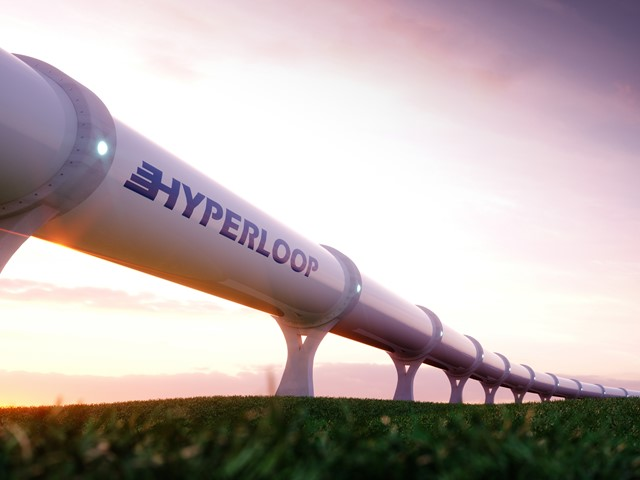Libertarian Escape Pods
- Devanshi Jariwala

- Dec 13, 2020
- 3 min read
The 'Anthropocene' refers to the Age of Mankind after the Holocene, the subsequent geological age that signifies the major and unsustainable effect of human activity on various global systems. In essence, the world in the Anthropocene is a 'world as design'. However, design studies have yet to be related to the novel circumstances that follow the beginning of the Anthropocene, or contextualized within as artificial design has unprecedentedly become the backdrop, as well as the approach, for coordinating and fostering everyday existence.
We need not imagine the parallel world where these concerns were not comprehensively dealt with, because we are living in it. The environmental crisis which are predicted is now steadily unfolding around us. It seems every day brings a new warning. NASA reports that the Antarctic glaciers are "waking up and losing ice dramatically". Latest research published in Nature has indicated that climate change raises hurricane rainfall, predicting that this is just the beginning. The devastating effect of human activities on insect populations has been seen by research worldwide, with numbers dropping, endangering the food chain. There are signs that forest and bush fires are increasing due to climate change, blazing from Alaska to Australia. There are two factors that might aid us in this regard and help us navigate certain recurring pitfalls – namely recognizing the dangers of optimism and isolationism.
Faced with dire predictions of the future, the temptation for architects is to develop utopian proposals. The problem with optimism is that it can be indulgent, exclusive or easily manipulated. Often, utopian proposals are libertarian escape pods or dubiously fanciful advertisements.
A plan to build self-sufficient floating cities outside of national borders. The Seasteading Institute is a non-profit organization founded by political economic theorist Patri Friedman and PayPal co-founder Peter Thiel. The organization strives to create "start-up countries" at sea, known as "seasteads" that give greater independence for research, technology and political advancement. The goal of the Institute, according to its website, is to create "open spaces for experimenting with new societies" in order to allow the next generation of pioneers to peacefully test new ideas for how to live together". The firm believes that with few rules, constructing floating cities would provide an alternative to traditional governance models. An agreement with the Seasteading Institute has been signed by the Government of French Polynesia to collaborate on the development of a pilot city in a lagoon near Tahiti. The test city, known as the Floating City Initiative, would serve as a proof-of-concept for the organization's proposal to build more offshore settlements.
Perhaps a scientific breakthrough that saves humanity from ourselves would be a deus ex machina, perhaps quantum computing, nanotechnology, atmospheric seeding or iron implantation. Yet climate change will begin to evolve rapidly in the meantime. The construction of tidal barriers and sea walls will become increasingly necessary, with all the related dangers and obstacles, provided that so many of our towns are situated next to rising waters. While vital in places, these measures are undertaken on the premise of turning cities into costly besieged fortresses.
Social, political and philosophical issues are discussed in science fiction. Cyberpunk is influenced by Cold War paranoia and the introduction of emerging technology, such as television, recording equipment, and personal computers, from a historical viewpoint. Cyberpunk continues to dominate popular society and many of its tropes have become part of the mainstream, making it more difficult to understand its limits as a genre.
The design and use of the hyperloop would dramatically alter the way we travel across the world as humans. The hyperloop is built to be powered entirely by solar energy, which if the hyperloop becomes the primary mode of transport for many people, would potentially further minimize the amount of non-renewable energy sources being used. The hyperloop reveals how it is possible to undo and restore the effect of human life to a beneficial aspect that supports the environment. In that area, the environment and architecture will develop into a new type that shows a link between nature and technology. One of the advancements that will alter the events of the Anthropocene will be the Hyperloop. Transporting renewable energy, traveling between cities quicker than regular flight, reducing the chance of an accident with automation.
Work Cite:
Architecture in the Anthropocene: Encounters Among Design ... quod.lib.umich.edu/o/ohp/12527215.0001.001/1:4/--architecture-in-the-anthropocene-encounters-among-design?rgn=div1;view=fulltext.
Calum Lindsay | 24 July 2017 20 comments. “The Seasteading Institute's Floating Cities Are Designed for Unregulated Innovation.” Dezeen, 26 Sept. 2017, www.dezeen.com/2017/07/24/seasteading-institute-floating-cities-designed-for-unregulated-innovation-architecture-mini-living-initiative/.











Comments